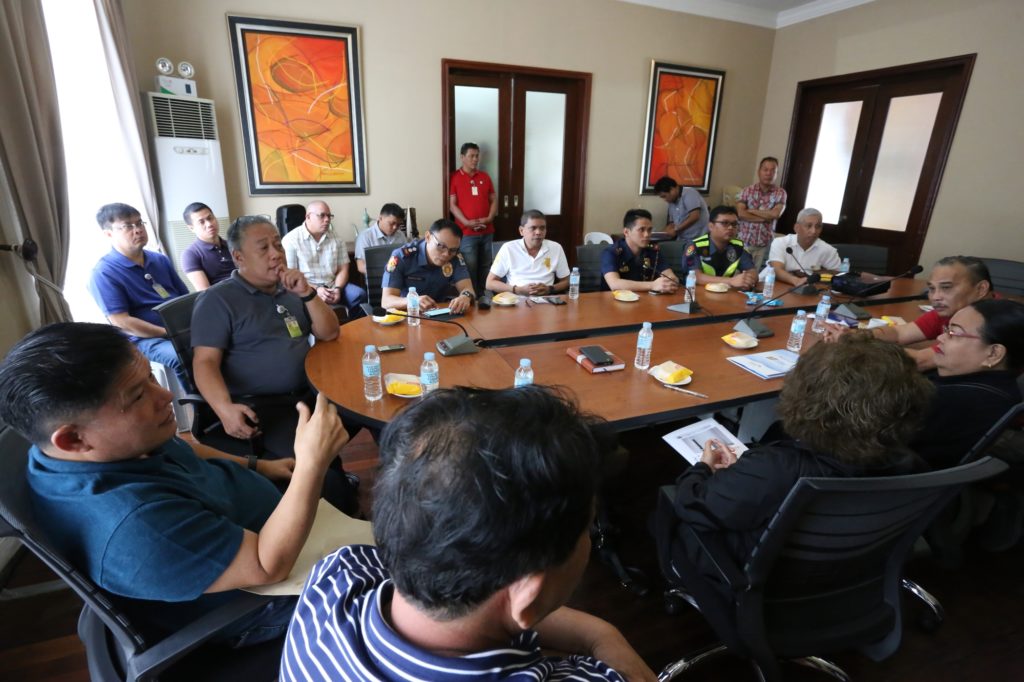TO alleviate traffic congestion in the south, parking on national roads, especially in Minglanilla town, will no longer be tolerated.
This was among the solutions agreed upon and discussed during a meeting called by Cebu Gov. Hilario Davide III of local chief executives, traffic and transport officials and other stakeholders, to come up with solutions to the worsening traffic situation in the south.
Minglanilla Mayor Elanito Dela Peña said they plan to prohibit vehicles from parking on major roads and highways.
“We also plan to remove vehicles parking along highways and maybe major roads, and draft a MOA (memorandum of agreement) to hire a private towing firm to tow them,” he said.
The mayor said that they are also open to clamping vehicles, aside from towing them but this will have to be contained in an ordinance from the municipal council.
The closed-door meeting was a result of several complaints from commuters and drivers regarding the traffic congestion during the holiday season.
“My expectation was that daghang sakyanan (there were a lot of vehicles), so traffic gyud (which would cause traffic congestion). I was concerned about what happened last Dec. 23. I was in Manila at that time but I received complaints and information about buses taking longer than usual to arrive at their destinations in the south … it was unusual,” Davide told reporters after the meeting.
The governor was referring to the day when traffic enforcers in Minglanilla town were reported to have left their posts to celebrate their Christmas party, leaving traffic flow unmanned and unsupervised.
Dela Peña clarified that most of the traffic enforcers responded to four vehicular accidents that occurred in their town that day.
He added that what exacerbated the traffic congestion were the accidents as well as Tropical Storm Vinta which prompted government officials to suspend bus and boat trips from Bato Port in Santander town to Dumaguete City in Negros Oriental.
“Yes, there was a Christmas party. Pero wala nalang nila gidayon kay nagresponde sila ngadto. Timing man gud atong higayona nga upat ka disgrasya nahitabo. Nag – accumulate na ang traffic. Gawas na ana, naay bagyo busa walay gipalabang nga bus and trucks. Didto hansak sa amoa (But it was cancelled because they were responding it. It just happened that there were four accidents that day. Traffic accumulated and aside from that, there was a storm, and trucks and buses were not allowed to cross the sea to Dumaguete City and were stuck in our town.),” explained Dela Peña.
The Minglanilla Traffic Commission (Mitcom) has 32 workers, 26 of them traffic enforcers manning the streets.
Officials from Minglanilla and neighboring Talisay City, agreed to coordinate closely to provide solutions to the traffic congestion in their areas.
Cecil Sandalo, consultant of Talisay City mayor Eduardo Gullas said the two LGUs will start planning solutions to ease traffic congestion as early as possible.
“It is a fact that volume of motorized vehicles is increasing every year. So we should plan early considering the fact that there is a growing number of vehicles every year,” Sandalo explained.
Cooperation
But traffic congestion is not an isolated problem in the southern portion of Metro Cebu, thus Davide asked for another meeting, this time with the mayors of Cebu City, Mandaue City, Lapu-Lapu City, Danao City, Carcar City, Naga City, and the towns of San Fernando, Consolacion, Liloan, Compostela.
The governor stressed the importance of cooperation not only among the local government units (LGU) but also with other concerned government agencies and stakeholders.
The governor said he plans to invite officials from the Land Transportation Office – 7 (LTO – 7), Cebu Provincial Police Office (CPPO) and the Highway Patrol Group (HPG).
“Coordination and cooperation is important in managing traffic. We should also include LGUs from Danao City in the north up to Carcar City in the south. Also the LTO, CPPO and the HPG,” said Davide.
On the agenda will be a discussion of long-term and short-term solutions to solve traffic problems such as the possibility of establishing an academy to train future traffic enforcers, and hiring more traffic enforcers, and the construction of alternative roads or routes.
